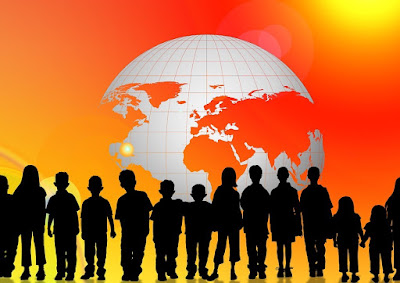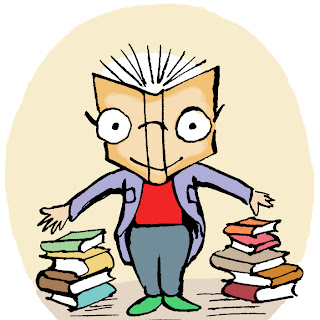Children's Books From Other Worlds
A few years ago Julie Sullivan went to translation school and came to a stunning realisation: virtually everything she knew about other times and places came from translations.*
We
understand the non-English-speaking world and all of world history
almost entirely through translations. Almost everything we know about
most foreign countries has at some time passed through a translator’s
head before getting to us!
 |
| Puss in Boots from 1695 |
But when it comes to modern books, there is a great discrepancy. While many books are translated every year from English into other languages, less than 1% of the children’s books in our bookshops are from other languages. Most of these are picture books. Of the few books translated, almost all are from the familiar European languages.
 |
| This Chinese book, translated beautifully by Helen Wang, won the Hans Christian Andersen Award for Children's Literature. It's about good people faced with difficult times |
- the cost of translations
- the lack of knowledge about good books from other cultures
- the perceived lack of interest in other cultures.
One retort to that:
 |
| Harry Potter books in Chinese, Armenian, and Marathi |
For all the talk in our culture at the moment about diversity in children’s books, it is still true that children around the globe are reading about English-speaking young people’s daily lives, history, and even fantasies – but our children aren’t learning about theirs.
Writing translated from other languages makes you see things differently.
Daniel Hahn, editor of The Oxford Companion to Children's
Literature
A good translation shouldn't read like a translation – if it’s good enough, children often don’t even suspect that the book was originally written in a foreign language. The translation, though, opens a door to a different reality, seen through the eyes of a foreigner who isn’t foreign any more, but just another person like themselves. One well-written book that brings another country to life for a young reader is worth dozens of dry textbooks. Translations open minds.
 |
| Marjane Satrapi's Persepolis is about her childhood in revolutionary Iran |
100 Great Translated Kids' Books from Around the World
Readers write in to the Guardian with their favourite children's books in translation
Why Reading Translated Kids' Books Makes a Difference
Reading the World
The most iconic book set in every country: Aisha is a 13-year-old girl in Pakistan who is reading one book from every country in the world, and writing about it on Twitter and on her Facebook page.
After discovering that most of the books I read as a preschooler, as an adolescent, were by a British or North American author, I wanted to explore the writers of the African continent and the tiny islands in Asia. I wanted to explore the nations of which I had never read any books. I wanted to explore stories that had been translated into English.
And so, in April 2016, I set myself on a quest of reading one novel/short story collection or memoir from every single country of the world. The author has to be a native of the country.
Isn’t that an inspiring quest?
@webwight
*And no two translators will translate the same passage in the same words! But that's a whole different topic.
Image sources: Cover image is from Geralt on Pixabay. Image of 1695 version of Puss in Boots is from Wikipedia Commons.













Interesting,and inspired me to look out some favourite 1960s childhood books - The Sun by Helga Mauersberger illustrators Klaus Winter & Helmut Bischoff originally published in Germany, The Magic Chalk by Zinken Hopp illustrator Gian Berto Vanni originally published in Norway (as Trollkrittet - great name, eh?)and two originally published in (then) Czechoslovakia,with Jiri Trnka illustrations - Through the Magic Gate and Primrose & the Winter Witch. Children's book illustrating in theUK in early 60s was mainly 'Ladybird book' style(and of course there's nothing wrong with that), but my artist family chose these translations for their vivid illustrations. As British publishers caught up stylistically, ironically fewer translations became available. As today has #favekidsbookart trending on Twitter I've put illustrations from the four I've listed on there (@proofreadingtip).
ReplyDelete